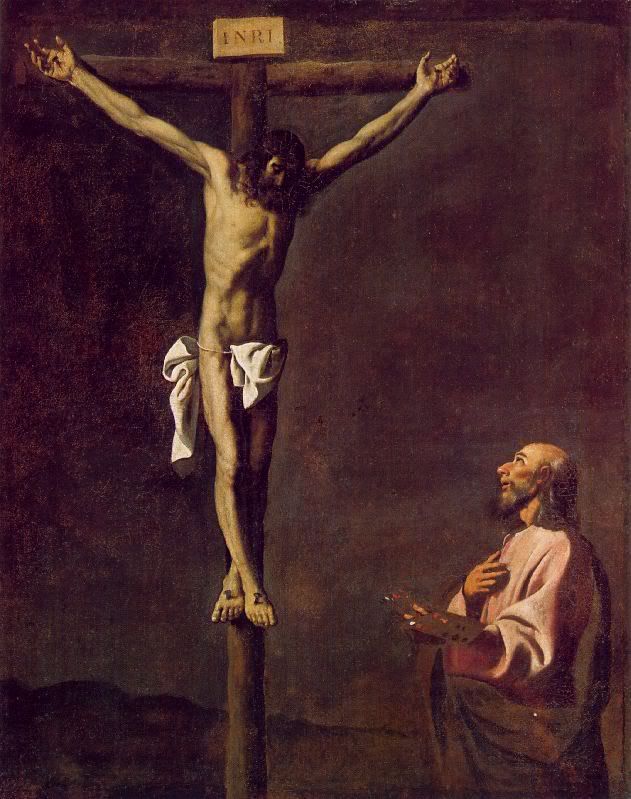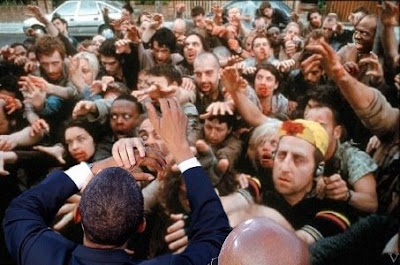
Father Thomas Rosica, CSB
VATICAN CITY, OCT. 19, 2008 (Zenit.org).- One of the topics mentioned in a good number of the synod presentations was that of the saints and blessed who offer the Church concrete examples of lives rooted in the sacred Scriptures and the living Word of God.
When Archbishop Angelo Amato, the new prefect of the Congregation for Saints' Causes, addressed the synod Tuesday, he offered a very graphic image of lives rooted in the sacred Scriptures: For more than 2,000 years men and women, old and young, wise and ignorant, in the East as in the West, applied themselves to the school of the Lord Jesus, which caused this sublime commandment to echo in their hearts and minds: "You must therefore be perfect, just as your heavenly Father is perfect" (Matthew 5:48).
This does not mean that man-made perfection is the goal to be reached, rather it is the heights of divine perfection. With simplicity and humility, even youth -- like 14-year-old Domenico Savio and 13-year-old Laura Vicuña -- have taken the Lord's words seriously and taken up the path toward sainthood.
Their library was largely composed of the life and words of Jesus: Blessed are the poor, blessed are those who mourn, blessed are the gentle, blessed are those who hunger and thirst for uprightness, blessed are the merciful, blessed are the pure in heart, blessed are the peacemakers, blessed are those who are persecuted. The saints, understanding that the beatitudes are the essence of the Gospel and the portrait of Christ Himself, became their imitators.

The theme of the saints and holiness reached a crescendo on Saturday evening during the solemn vespers ceremony celebrated in the Sistine Chapel by Benedict XVI, the Ecumenical Patriarch Bartholomew I of Constantinople, and all delegates and participants in this world Synod of Bishops on the Word of God in the life and mission of the Church.
Backdoor
We were told at the end of the morning session to begin making our way around 4 p.m. through the "back way" to the Sistine Chapel: walking around the basilica, through parts of the Vatican Gardens, past the palace and manicured gardens of the Governatorato, and into the courtyard of St. Damaso.
Basilian Bishop Ronald Fabbro of London, Canada, and I took our time walking along the quiet path and into the maze of inner courtyards until we arrived at San Damaso. We joined many other cardinals, bishops and synodal delegates who were then escorted by Swiss Guards up the "seconda loggia."

Once we arrived in the Sistine Chapel, there was a hush over the audience, many of whom had arrived a full hour early just to pray under and before the beauty around us. Shortly before the vespers began, a Vatican monsignor from the Office of Pontifical Ceremonies spoke to us about the historic and ecclesial significance of this chapel's artwork, commissioned by Pope Julius II. The chapel was built with the same dimensions of the Holy of Holies in the Temple of Jerusalem. The monsignor did not, however, touch upon some things I remember about this grandiose room from my art history classes while I was a university student years ago.
For example, Pope Julius was referred to as "Il Terrible." His life reminds us of one of the colorful characters of Rabelais's world: Julius was a wild hunter, a boastful warrior and bullish fighter, and somewhat of a problematic character. "E' stato un papa abbastanza curioso" (He was quite a curious Pope), one Vatican diplomat said -- diplomatically!
Contrary to popular opinion, Michelangelo Buonarotti didn't paint the frescos in the reclining position, nor did he do them alone. He and his helpers prepared and painted the vault from the standing position (albeit leaning back a bit). The artist had many assistants -- to scrape, prepare the wall for plaster, to mix the paints, and to carry up supplies from the floor 60 feet below. He did a few of the later characters free hand, but most were detailed in "cartoons" (preparatory drawings).
Often, work had to be done while services were going on below. The bishops and cardinals often complained back then about the dust and noise. There were no complaints from bishops and cardinals on Saturday night. Only awe and gratitude for being in this room.
Vatican first
At exactly 5 p.m., the papal and patriarchal procession entered the Sistine Chapel as the Sistine choir began its haunting chants. The significance of this sight unfolding before us was lost on no one in the Sistine Chapel.

Benedict XVI and the Ecumenical Patriarch Bartholomew I entered the chapel walking side by side. Behind them came their closest collaborators working in the areas of Christian unity in their respective churches. This was history in the making: the first time an Orthodox patriarch was taking part in a world Synod of Bishops, or co-presiding, if you will, in this historic and magnificent place.
Following the vespers, the Pope invited Patriarch Bartholomew to address us, and did he ever speak, in flawless English. The Ecumenical Patriarch's talk was divided into three sections: on hearing and speaking the Word of God through the Holy Scriptures; on seeing God's Word in nature and above all in the beauty of the icons; and finally on touching and sharing God's Word in the communion of saints and the sacramental life of the Church."
The talk was a masterpiece meriting further study, meditation and contemplation. Click here for full text: http://zenit.org/article-23981?l=english
Like fire
The third section of the Patriarch's magisterial lesson really struck me. Here are some excepts of Bartholomew's reflection on the saints and holiness:
"Within the life of the Church, the unfathomable self-emptying and generous sharing of the divine Logos is reflected in the lives of the saints as the tangible experience and human expression of God's Word in our community. In this way, the Word of God becomes the Body of Christ, crucified and glorified at the same time. As a result, the saint has an organic relationship with heaven and earth, with God and all of creation. In ascetic struggle, the saint reconciles the Word and the world [...]
"This is why the saint loves with warmth and spaciousness that are both unconditional and irresistible. In the saints, we know God's very Word, since -- as St. Gregory Palamas claims -- God and his saints share the same glory and splendor. [...]
"In the gentle presence of a saint, we learn how theology and action coincide. In the compassionate love of the saint, we experience God as "our father" and God's mercy as "steadfastly enduring." (Ps. 135) The saint is consumed with the fire of God's love. This is why the saint imparts grace and cannot tolerate the slightest manipulation or exploitation in society or in nature. [...]
"And within the communion of saints, each of us is called to 'become like fire' (Sayings of the Desert Fathers), to touch the world with the mystical force of God's Word, so that -- as the extended Body of Christ -- the world, too, might say: 'Someone touched me!' (cf. Mt 9.20)
"Evil is only eradicated by holiness, not by harshness. And holiness introduces into society a seed that heals and transforms. Imbued with the life of the sacraments and the purity of prayer, we are able to enter the innermost mystery of God's Word.
"It is like the tectonic plates of the earth's crust: the deepest layers need only shift a few millimeters to shatter the world's surface. Yet for this spiritual revolution to occur, we must experience radical metanoia -- a conversion of attitudes, habits and practices -- for ways that we have misused or abused God's Word, God's gifts and God's creation."
Archbishop Angelo Amato spoke of the personal library, composed of the life and words of Jesus, especially of the great blueprint for the Christian life found in the beatitudes.
The Ecumenical Patriarch spoke not just of words imprinted on the hearts and minds of the holy ones, but also of the gift of the fire of God's Word that must be alive and burning within the hearts of the saints.
It is this fire, this dynamism, that will burn away the evil within us and around us and cause holiness to burst forth, healing and transforming the society and culture surrounding us.
* * *
Basilian Father Thomas Rosica is the Vatican's English-language press attache for the 2008 world Synod of Bishops. A Scripture scholar and university lecturer, he is the chief executive officer of the Salt and Light Catholic Media Foundation and Television Network in Canada, and a member of the General Council of the Congregation of St. Basil.











![[Fatima.JPG]](https://blogger.googleusercontent.com/img/b/R29vZ2xl/AVvXsEi-g9SvcIw2JPEh7lcbkbXCatyHriBx-XM_SF4NJYRRvtt-M8NOHhQUBXHzeSjS8jlaFzxpCVeetXZIgG6Qp2tiISkheBvqPka2Sx2_jlGfP7KBQ-FxzMgEKy0eRPEvynt05NeFplwYiPn0/s1600/Fatima.JPG)




 By Steve McConnell
By Steve McConnell





